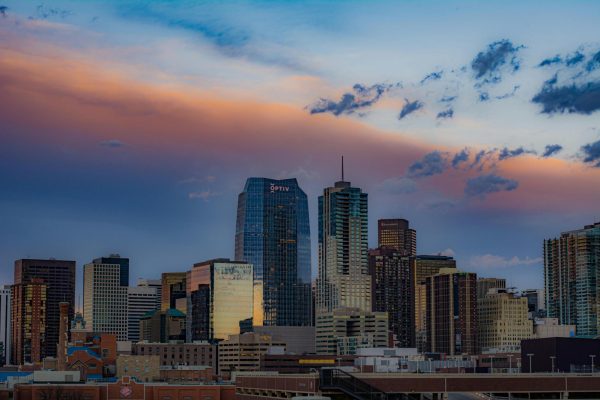Granting Syrian Refugees Asylum: A Sound Investment for America?
Gut-wrenching images of smoldering Syrian children, asphyxiated by chemical weapons, dropped on them by Syrian Government forces on Monday, April 3, prompted newly elected US President Trump to draw his own distinctive red line.
“What happened in Syria is truly one of the most egregious crimes, and it shouldn’t have happened,” Trump told reporters in the Press cabin of Air Force One, the following Thursday afternoon. The incumbent was on his way to Mare a Lago, Florida, for a meeting with Chinese President Xi Jinping.
Hours later, ruthless Syrian President Bashar al Assad, received an unequivocal military message from the American Administration. Upon Trump’s order, two destroyers, the U.S.S. Porter and the U.S.S. Ross, strategically positioned in the eastern Mediterranean, unleashed 59 Tomahawk cruise missiles on an airbase in Al Shayrat, western Syria, from where the chemical weapons attack was allegedly launched.
The chemical weapon Sarin is an odorless, deadly gas that acts as a nerve agent, constricting muscles including those controlling breathing. Although outlawed in April 1997 by the Chemical Weapons Convention of 1993, US intelligence indicates that Syria still has a ‘ridiculously huge‘ stock pile of the lethal weapon.
Though it took Trump less than 63 hours to let Assad and the world know where he stood on the use of chemical weapons, the White House’s broader military strategy in the war-torn region remains ambivalent.
More importantly, the US President continues to stay tight-lipped on whether his renewed involvement in Syria will include a change in policy towards Syrian refugees.
Syria’s civil war, initiated by its own leader, further inflamed by the terror group ISIS, has become the battleground for a political-religious proxy war with multiple forces involved–each adhering to divergent agendas. Dredging on for six years, this violence has resulted in nearly half a million Syrian civilian lives lost, and over five million fleeing the country in search of peace and freedom.
While the majority of western nations have accepted a large share of these desperate people, the new American administration still grapples with the decision whether to allow entrance to a preordained figure of Syrian refugees.
After 9/11 and more recent tragedies like the San Bernardino shootings and the Orlando shootings, the US has become increasingly vigilant towards immigrants from the troubled Middle East. Strong voices assert that possible ISIS sympathizers could be among the admitted refugees, rendering the citizens of America vulnerable to more terror attacks.
But according to security analysts, the probability of rogue ISIS fighters infiltrating the well-vetted immigration process, especially for Syrian refugees, is highly unlikely.
There is a stark difference between the immigration procedures conducted in the United States and those done in Europe.
While refugees seep through the virtually non-existing borders of Europe with marginal resistance, according to officials from the Department of Homeland Security, the screening procedure for Syrian refugees, is the most intensive vetting process for any group that enters the US.
Multiple law enforcement, security, and intelligence agencies collaborate to perform the most rigorous screening initiated by a referral from the United Nations High Commissioner for Refugees. Once they conduct their own background checks on the referred refugees, the United States begins its own investigations, which could take between 18 and 24 months.
With such an intensive vetting program as well as conceivably easier means to breach U.S. borders, it would make little operational sense for potential ISIS fighters to try to gain entry into the US this way.
Furthermore, a significant portion of the fleeing Syrians are highly educated professionals who would bring their know-how with them. Therefore, although opponents express concern about the safety of America, Syrian refugees ought to be admitted into the country because they will be bringing assets that are beneficial to US society.

‘Give me your tired, your poor your huddled masses, yearning to breathe free,’ are the emblematic words inscribed on the Statue of Liberty, the very beacon of the free world. America is known to be a nation built by immigrants. Whether they arrived as a result of the calamitous Irish Potato Famine, or because they were pushed out of Europe due to shortage of land, political persecution, or by virtue of oppressive servitude – most Americans trace their lineage to another part of the World.
Still, many Americans today believe that the borders to their country ought to be fastened. Some argue that the open door policy of the past, which served the purpose of populating this vast land, has run its course. The United States has, by now, reached its capacity, and immigration, particularly from certain hostile regions, ought to be curbed.
Considering the rapid consumption of national ecological resources and the US’s dependence on foreign energy supplies, it could be reasonably argued that any additional influx of people at this time will further burden the country.
Indeed, due to a steady population growth, particularly in minority communities, many of the major cities in the US are suffering from housing problems and infrastructural challenges, as well as other socio-economic impediments. And those who assert that America is only sluggishly rebounding from a stifling recession would not be misguided. Critical voices on the admission of Syrian refugees therefore assert that US tax payers’ monies ought to be spent on remedying internal problems; heeding the old adage: “charity starts at home.”
Though a credible argument, it is important to still consider that even after 400 years of steady settling, the United States of America still has vast areas of unpopulated land. Moreover, the country’s cities are steadily growing. America’s present growth spurt spans the south and the west of the country, where strong economies are providing favorable employment opportunities and attracting young workers from other parts of the country. Distributed in a rational manner, Syrian refugees could easily be absorbed by these major cities, which invariably already have similar communities.
Furthermore, history has shown that Muslims in the United States have assimilated extremely well, and have proven to be law abiding, productive members of society. Many American Muslims are highly educated, contributing positively to US communities.
In her CNN article, The Truth about Muslims in America, CNN news editor Holly Yan, highlights the fact that, “US Muslims have the second highest level of education among religious groups in the country; Jews have the highest.”
Having a deep-seated admiration for this country that has provided refuge and sanctity (a privilege so often denied them in their own countries of origin), they strive to repay America by doing well.
In addition, statistics reveal that Muslim communities, flourishing in almost every metropolitan sprawl across the nation, have for the most part very liberal religious views. Consequently, the notion that incoming Muslims will take over the US with the intent to impose Sharia Laws, as many Americans believe, is unwarranted given the fact that most Muslims – not only in America but across the globe – do not adhere to Sharia Laws.
Accordingly, a significant portion of these refugees coming from Syria will be highly educated and qualified professionals, who already have a proficient understanding of English, making their inclusion into American society easy, and of great benefit.
Also, by granting these refugees asylum, America would not only be winning the moral battle against ISIS, but fleeing Syrians could potentially bring essential knowledge about the internal operations of the terror group.
While it is safe to conclude that the US’s involvement in Syria’s war has benevolent motives, the underlying fact remains that the by-product of this vicious war has been thousands of innocent deaths and millions of people fleeing their homes.
And though the US government allocated over $4 billion to assist Syrians, few refugees have been admitted into the country. So far, the majority of the industrialized countries have opened their doors, with Germany leading the lot by having accepted over a 1.3 million refugees in the past two years. Canada, the UK, and several other European nations have begun to follow Germany’s lead by welcoming in an agreed number of refugees, adhering to the United Nations Universal Declaration of Human Rights.
To place the plight into perspective, it is important to understand that a refugee is someone who has been forced to leave his or her home because of war, persecution or natural disaster. While America needs to stay vigilant, it should not turn its back on the needy and desperate that are knocking on its door.
While the concerns and safety of its citizen should be of paramount importance, the US must continue to shoulder its responsibilities to the global community, especially given its direct involvement through last Thursday’s military airstrike.
By granting entry to Syrian refugees, America would not only be standing by its cardinal principles, but we would also be gaining a pool of potential wealth and resources that will ultimately bless this great nation.







